Table of contents
True or Common Sage Also called garden sage, medicinal sage or kitchen sage ( Salvia officinalis). In addition to the felty, hairy leaves of the shrub, the flowers can also be used. How do I recognize true sage? The leaf color varies between gray-green, silver-green, light gray or purple-violet. Sometimes you can also see yellow or white marbling on the leaves.
Use in the kitchen:
This evergreen spice and medicinal plant is particularly popular in Italian cuisine. Sage smells aromatic, tastes spicy, bitter and is astringent, which can leave a slightly furry feeling in the mouth.
The leaves and flowers are used raw or cooked. Chopped sage leaves are a tasty spice for beans, peas, soups, salads, diet and fresh foods. Dried sage is more aromatic than fresh. It is also often used in ground form (sage powder).
In addition to seasoning hearty dishes, sage is also suitable for soft drinks such as lemonade, cocktails or smoothies.
In Germany, among other places, sage cakes are a traditional pastry for church fairs or fairs, as they are said to protect against intoxication. Sage leaves with stems dipped in batter (sweet or salted), baked until golden yellow, are served as so-called "sage mice".
Vegan recipe for tagliatelle with pumpkin and sage sauce:
Ingredients: 1 butternut squash, 4 tbsp rapeseed oil (refined or HOLL oil), 250 g tagliatelle, 250 ml oat cream, 120 g walnuts, 3 cloves of garlic, approx. 20 fresh sage leaves, ½ tsp nutmeg, salt andpepper.
Preparation: Halve the pumpkin, remove the seeds and stalk, then dice. Boil half of the cubes in water and simmer for 10 minutes over a low heat. Mix the other half with 2 tablespoons of rapeseed oil, season with salt, pepper and nutmeg and bake in a preheated oven at 180 degrees (fan oven) for 20 minutes. In the meantime, cook the tagliatelle until al dente. Heat 2 tablespoons of rapeseed oil in a high pan. Peel and finely chop the garlic, fry a little in the pan and then add the chopped sage. After draining the water, finely puree the cooked pumpkin cubes, mix with the oat cream and season with salt and pepper. Fold the drained pasta into the sauce, divide into 4 portions, add the pumpkin cubes from the baking tray and the chopped walnuts on top.
Tip: You don't need to peel fresh butternut squash. If the shell is hard, peeling is necessary for a tender treat.
Vegan recipe for sage smoothie:
Ingredients: 2 apples, 1/3 cucumber, 2 leaves oflettuce, baby spinach or fresh chard, juice of 1 lemon, 3 leaves of sage, 1 piece of ginger, water as needed.
Preparation: After removing the core, roughly chop the apples. Peel the cucumber and cut it into small pieces. Wash the lettuce or similar vegetables, roughly chop the ginger after peeling. Finely puree all ingredients including the lemon juice in a blender, adding cold water as needed. Sweeten with honey or agave syrup as desired or add additional fruit.
Preparing tea with sage:
For 1 cup of tea, pour 1 teaspoon of dried, chopped sage leaves into ¼ liter of hot water and let it steep for 10 minutes. You can drink 2-3 cups throughout the day.
A tea made from a mixture of equal parts sage and chamomile is also suitable for gargling and rinsing, for wound compresses and moist dressings. Pour ¼ liter of boiling water over this mixture and allow to steep for 15 minutes.
To combat excessive sweating, brew the tea stronger. Use 3 heaped teaspoons per cup, but this is not recommended for people with sensitive stomachs, as they do not tolerate this dosage well. 1
Vegan recipes with sage can be found under the note: " Recipes that have the most of this ingredient ".
| Not only vegans or vegetarians should read this: Vegans often eat unhealthily. Avoidable nutritional errors. |
Shopping - where to buy?
Sage plants and fresh and dried sage leaves are available in most grocery stores, health food stores, organic shops, fresh at weekly markets or online. The fresh leaves are available almost all year round at Coop and Migros, sometimes also at Spar, in Germany at Rewe, Edeka and at organic supermarket chains such as Denn's or Alnatura.
We did not find any offers at Denner, Volg, Aldi, Lidl or in Austria at Hofer, but sage may be available as a tea or fresh produce occasionally during special promotions.
Found in the wild - Season:
Common sage ( Salvia officinalis) is native to the Mediterranean region, but according to Wikipedia it now grows throughout Europe. Wild sage is found mainly on the Adriatic coast (Dalmatia), in Italy, southern France and Greece on dry and calcareous rocky slopes. 1 Season: The leaves can be harvested from around May to October, the flowers between June and August.
Storage:
Freshly cut sage leaves can be stored in the refrigerator for about two weeks. Purchased sage is removed from the plastic bag and the entire shoot is placed in a damp kitchen towel.
To preserve the leaves, you can freeze them individually, so the sage will last for over a year. You should only chop the leaves roughly before you need them. Sage leaves can also be dried. To air-dry them, place the freshly cut leaves loosely next to each other in a flat cardboard box. Storage in a cool, dark place prevents premature decomposition of vitamins and loss of flavor. To store the dried leaves, it is best to seal them in a glass container and chop them up just before you use them in the kitchen.
The acids contained in sage, such as carnosic acid and rosmarinic acid, protect food (especially meat 2) from spoilage and promote its color stability and shelf life. 3
Ingredients - nutritional value - calories:
The main active ingredients in sage are essential oils, tannins, bitter substances and flavonoids, followed by rosmarinic acid and caffeic acids. The components of essential sage oil are thujone, linalool and 1,8-cineole.
The energy content of 59 kcal in garden sage is not particularly significant, as the daily intake of spices is rather low.
Sage has a good amount of calcium (266 mg/100g), which is considerable compared to a raw onion (23 mg/100g). Similar amounts of calcium are contained in fresh rosemary (317 mg/100g) or fresh marjoram (322 mg/100g when dried) (even 1,990 mg/100g). The amount is slightly higher in fresh thyme (405 mg/100g), and even higher in bay leaves (dry) (834 mg/100g). Adequate calcium intake is very important for the development of the skeleton and especially during the growth phases of infancy and adolescence. 4
Sage contains 69 mg of magnesium per 100 g, and a similar amount can be found in fresh basil (64 mg/100 g). Fresh coriander leaves have a rather low amount of 26 mg/100 g, whereas this mineral is very well represented in fresh thyme with a content of 160 mg/100 g. Magnesium, together with calcium, is important for normal muscle function and for the mineralization and growth of bones. 4
Also worth mentioning about sage is its iron content (4.5 mg/100g). In comparison, fresh coriander leaves only contain 1.8 mg/100g of iron, but fresh thyme contains a much higher amount of this trace element, 17 mg/100g. Iron is necessary for the transport of oxygen in the blood and its storage in the cells. 4
You can find all the ingredients of sage, the coverage of the daily requirement and comparison values with other ingredients in our nutrient tables. In the article Nutrients explained you will get a detailed insight into the topic.
Health aspects - Effects:
The tricyclic diterpenes (carnosol and carnosic acid) contained in sage have an antioxidant, antimicrobial effect 5 as well as a chemoprotective effect against carcinogens. 6
The essential oils of medicinal sage ( Salvia officinalis) contain the ingredient α-thujone, which creates a bitter taste sensation. Thujones are neurotoxins that can also trigger epileptic cramps if the dosage is too high. The Aroma Ordinance limits the thujone content in sage preparations to a maximum of 25 mg/kg. 7 However, there is no clear evidence that the content in sage leads to such impairments; studies mostly refer to alcoholic beverages (such as absinthe). 8 The HMPC ( Herbal Medicinal Products Committee) ensures that there are no undesirable neurotoxic effects of thujone-containing medicines if the daily intake of a maximum of 6 mg of thujone per person is adhered to. 9,18
Dangers - Intolerances - Side effects:
Sage tea or other sage products are also used to regulate milk flow during breastfeeding. 10 However, excessive consumption can cause the milk flow to dry up.
As mentioned in the last chapter, the revised monograph of the HMPC ( Salvia officinalis L., folium) no longer advises against long-term use, provided that the dosage recommendation is followed and the daily upper limit for thujone intake is observed. 18 However, if symptoms persist, we recommend a visit to the doctor.
Use as a medicinal plant:
Where does sage help? True sage has many uses as a medicinal plant. As a tea made from fresh or dried herbs, it helps with inflammation of the gums, mouth and throat (especially for sore throats) and with excessive sweating. Sage tea also has a calming effect and has a positive effect on the stomach and intestines (digestive). The tannin it contains, together with the essential oils, supports an antispasmodic effect in cases of diarrhea. 1
There are also aqueous or alcoholic sage extracts available on the market that can be used as a gargle solution to treat inflammation of the mouth and throat. 11
Folk medicine - natural medicine:
Sage is a popular spice and medicinal plant and has had a place in society for many centuries. In folk medicine, the plant is used for excessive sweating and sweating associated with menopause. As a steam inhalation, sage is good for a blocked nose and for cleaning the upper mucous membranes following a cold. The plant also provides relief for cold sores (herpes). 12
In the Middle Ages, sage was used as part of a medicinal bundle alongside yarrow, mugwort, marigold and arnica to aid in childbirth.
Occurrence - Origin:
This aromatic plant originally comes from the western Mediterranean countries and North Africa. It is found in calcareous, stony and dry locations. Sage is now widespread throughout Europe.
Grown in the garden or as a pot plant:
The subshrub, which can grow up to 70 cm tall, has felty, hairy stems, grey-green, elongated, hairy leaves and spikes of violet lip flowers. All parts of the plant have a strong aromatic smell.
The common sage is a traditional plant species found in many farm gardens. The garden sage tolerates drought and likes it very sunny and warm. It loves dry, calcareous and permeable soil. Depending on the species, the heat-loving plant is only partially hardy and needs winter protection in areas with harsh climates .
Individual plants can be easily grown in pots and boxes. Waterlogging should be avoided. A herb bed or a herb spiral are ideal places for them to thrive. It should be noted that sage does not go well with peppermint. Sage, for example, grows well next to tarragon, chives, thyme, savory and oregano. The plant can be propagated in spring by sowing, by dividing the roots or from June by taking ten centimetre-long cuttings. All but two leaves should be removed from the cuttings. The shoots are then placed in the potting soil and kept moist until roots form. 13
If you prune the semi-shrub of the kitchen sage regularly, it will retain its aromatic leaves. Young shoots should be pruned regularly so that the plant becomes less woody, and regular harvesting in spring also stimulates growth. Wilted flower heads can be pruned off in August. Pruning at the end of winter (end of February) will produce many new shoots in spring. But always stay in the leafy area and do not prune too much in the leafless, woody area.
Danger of confusion:
The most likely possibility is confusion with the wild-growing meadow sage ( Salvia pratensis). However, its leaves are bare and toothed. The leaves, stems, shoot tips and flowers are also edible, but the effect is much weaker than that of true sage.
The steppe sage ( Salvia nemorosa) is one of the ornamental sage species that impress with their bright colors in perennial beds, borders and pots. Its leaves are lancet-shaped, finely toothed, rough and have an aromatic scent. The steppe sage is not poisonous, but it is not recommended to eat it. In addition, it lacks the ability to have a positive effect on health. It bears flowers in deep purple and blue tones (less often pink or white), which are also very attractive to bees and other insects. 14
Aztec sage ( Salvia divinorum) contains psychoactive substances. It is also known as magic sage or Mexican sage. The terpenoid salvinorins (A and B) have a hallucinogenic effect at doses of 0.2 mg and above and can cause severe psychosis. 15 Due to misuse, Salvia divinorum has been classified as a non-marketable narcotic since 2008. 16
Animal protection - species protection - animal welfare:
The light blue to violet-blue flowers of the common sage appear from June to August in elongated false ears. They form an excellent bee pasture. The honey yield, with a possible yield of 600 kg per hectare of cultivated area per year, clearly exceeds that of the rapeseed plant, which is considered a good bee pasture. 17
General information:
Common sage ( Salvia officinalis) is a plant species in the genus sage ( Salvia) and a typical member of the mint family (Lamiaceae). The genus sage consists of several hundred species. Other species that can be used are fruit sage ( Salvia dorisiana), honeydew sage ( Salvia elegans), pineapple sage ( Salvia rutilans) or peach sage ( Salvia greggii).
Sage is one of the oldest known spice plants and found its way into our kitchens in the Middle Ages. 1 The names sage and salvia are derived from the Latin word salvare, which means to heal, to save.
Alternative names:
Common sage is also known as garden sage, kitchen sage or medicinal sage. It also has the popular names Salfer, Salbet, Selwe and Sälfli. 1
In English, sage is called sage, garden sage, common sage or culinary sage.
Keywords for use:
Sage (mostly white sage: Salvia apiana) is also used as incense for cleansing rituals and other ceremonies. The sage is tied into a bunch, lit at one end and the flame blown out. The smoke develops a bitter-aromatic and resinous-fresh aroma. This is said to help cleanse negative energies in rooms, such as hospital rooms.
The tannins contained in sage can also be used for cosmetic purposes on the hair. Sage is used as a decoction that darkens the hair overall. Sage can also be used for impure skin. 5
Literature - Sources:
Bibliography - 18 Sources
| 1. | Pahlow M. Das grosse Buch der Heilpflanzen. Gesund durch die Heilkräfte der Natur. Nikol: Hamburg. 2013. |
| 2. | Oberdieck R. Natürliche Antioxidantien aus Rosmarin und Salbei: Fettschutzstoffe für Lebensmittel insbesondere Fleischwaren. Fleischwirtschaft. 2004;84(10). |
| 3. | Brieskorn CH, Dömling HJ. Carnosolsäure, der wichtige antioxydativ wirksame Inhaltsstoff des Rosmarin- und Salbeiblattes. Zeitschrift für Lebensmittel-Untersuchung und Forschung. 1969;141. |
| 4. | USDA United States Department of Agriculture. |
| 5. | Blascheck V, Hänsel R et al (Hrsg.). Hagers Handbuch der pharmazeutischen Praxis. Springer. 1997. |
| 6. | M. Danilenko, X. Wang, G. P. Studzinksi: Carnosic acid and promotion of monocytic differentiation of HL60-G cells initiated by other agents. Journal of the National Cancer Institute (JNCI). 2001;93(16). |
| 7. | Bundesministerium der Justiz und für Verbraucherschutz. Aromenverordnung. |
| 8. | Dettling A et al. Absinthe: Attention performance and mood under the influence of thujone. J Stud Alcohol. 2004;65. |
| 9. | EMA European Medicines Agency. Public statement on the use of herbal medicinal products containing thujone. HMPC. 2010. |
| 10. | Mills E, Dugoua JJ et al. Herbal medicines in pregnancy and lactation: an evidence-based approach. Taylor & Francis. 2006. |
| 11. | Rüdt U. Heil- und Giftpflanzen. Kosmos Verlag: Stuttgart. 1993. |
| 12. | Naturheilkunde.de Salbei (Salvia officinalis) - das Multitalent. |
| 13. | Mein-schöner-Garten.de Echter Salbei, Küchen-Salbei. |
| 14. | Mein-schöner-Garten.de Steppen-Salbei Salvia nemorosa. |
| 15. | Siebert DJ. Salvia divinorum and Salvinorin A: new pharmacologic findings. Journal of Ethnopharmacology. 1994;43. |
| 16. | BAK Bundesapothekenkammer. Arzneimittelmissbrauch - Leitfaden für die apothekerliche Praxis. Berlin. 2018. |
| 17. | Lipp J. Handbuch der Bienenkunde – Der Honig. Ulmer: Stuttgart. 1994. |
| 18. | deutsche-apotheker-zeitung.de Salbei auch zur Langzeitanwendung. |

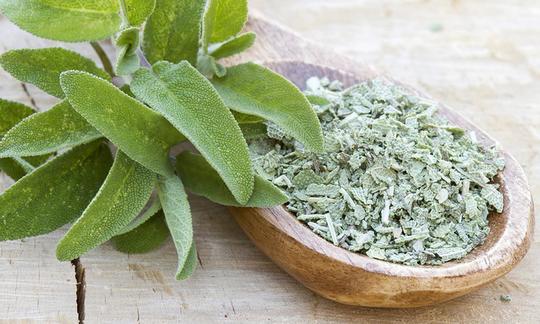

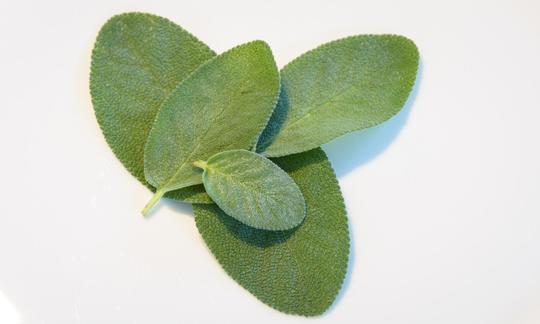

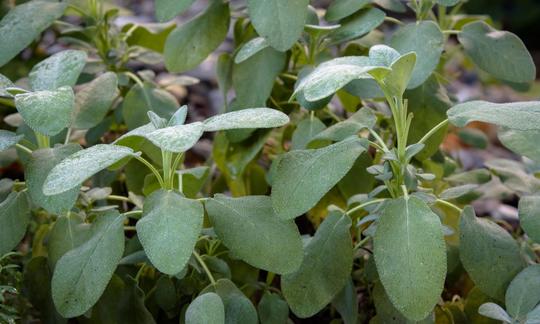

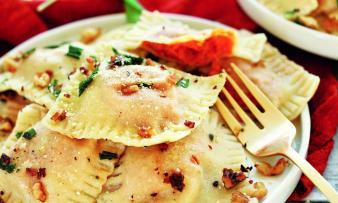
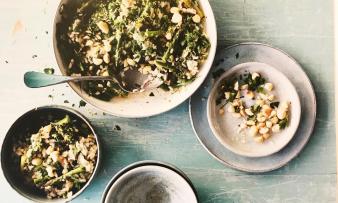
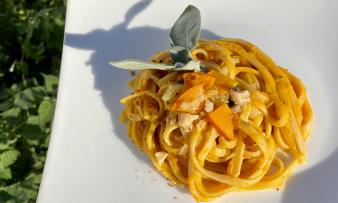





Comments